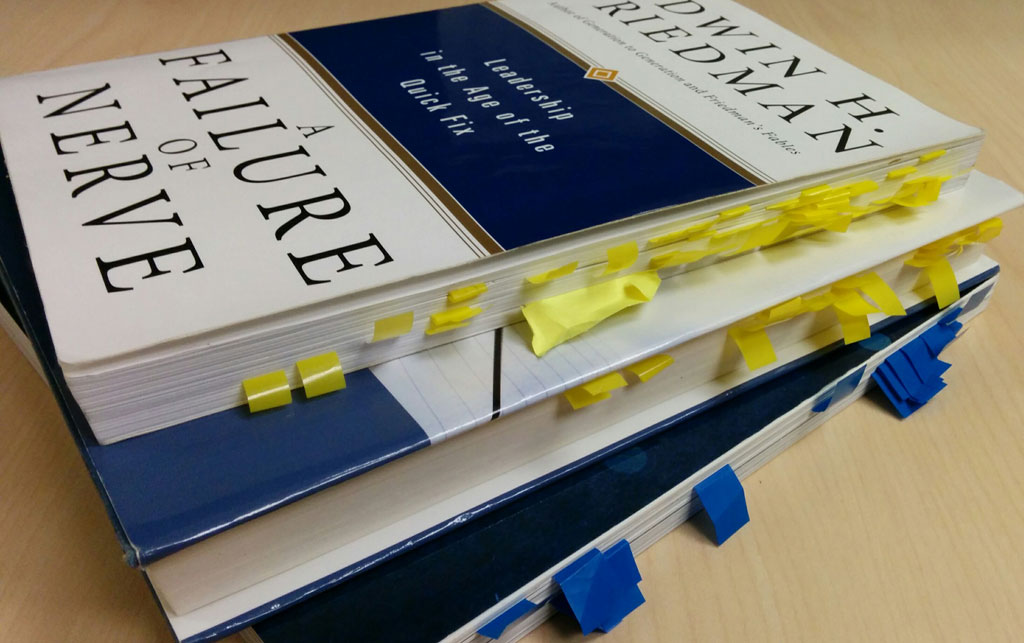
How E-Reading Threatens Learning in the Humanities – Commentary – The Chronicle of Higher Education via kwout
The timing on this Chronicle of Higher Education post by Naomi S. Baron professor of linguistics and executive director of the Center for Teaching, Research & Learning at American University, could not have been more fortuitous. It is fortuitous in two ways. First, I have been reflecting on the importance of creating learning environments that help foster intrinsic motivation and provide the necessary context and significance for learning. And second, I have been lamenting receiving an exceptional book as a gift in print format because I am not able to add virtual highlights and notes which I use extensively in all the books that I read using an e-reader.
I will deal with the second point first. In the past I had extensively used adhesive book tabs, notes in the margins and highlights to mark and identify important passages and as result some of my most heavily used books are messy and cluttered.

While the tabs were intended to help me find the important thoughts and ideas in the books they really didn’t help because the more tabs you add the more difficult it becomes to find what you are looking for. In addition, as you can see from the picture above, the tabs get curled and mangled the more you use the book. Virtual highlighting and note placement not only eliminates this problem you can also search the entire book, notes or your highlights looking for the that key term or passage. In addition, many e-readers enable you to export all your highlights and notes to a text file which allow you to work directly with the most important sections of the text.
The final frustration with receiving a print based book is that I no longer carry any of these adhesive tabs in my briefcase or have any on hand in my office so I am not able to mark the important sections of the book. I will just have to purchase an electronic copy of this book I received as as gift.
While this convenience aspect of using an e-reader is important it may not be as important as my first point–reflecting on the importance of creating learning environments that help foster intrinsic motivation and provide the necessary context and significance for learning. Professor Baron argues that “deep reading” is not possible on an a digital screen because digital reading encourages distraction because most people have the tendency to engage in some form of multitasking. She also points to survey results that reveal that some students still view reading in print as “real reading” and that reading in print forces a student to read more slowly and carefully. Baron also points to anecdotal evidence of students asking for shorter version of the text, article or other form of summary like SparkNotes because they can’t be bothered to read the full text.
In the prelude to the actual statement of her argument, Baron also laments that students just don’t have the motivation to read deeply. I would argue that this is the actual problem and digital text made available on an phone, tablet, or other digital devices simply escalate the tendency to look to something more interesting or meaningful. I recall having to slog through too many devastatingly dry, boring and irrelevant books in my many years as student and even though I didn’t have access to the books in a digital form I still found many ways to distract myself from the mind-numbing reading of material that was given to me without any context or obvious purpose. OK, the purpose was to know the material for the test–unfortunately that was and is still not enough for most students.
The challenge that we have as educators is to create a learning environment where students understand and appreciate that they can learn so much from the work of others. The “deep reading” that Professor Baron argues is so important to the humanities only happens with the right motivation. The format of the material is really irrelevant. If learner understands why the material is important, where it fits in their life’s journey and how it will help them to become who they wish to become the deep reading, and I would argue deep learner, will happen using text or other materials in any format.


































